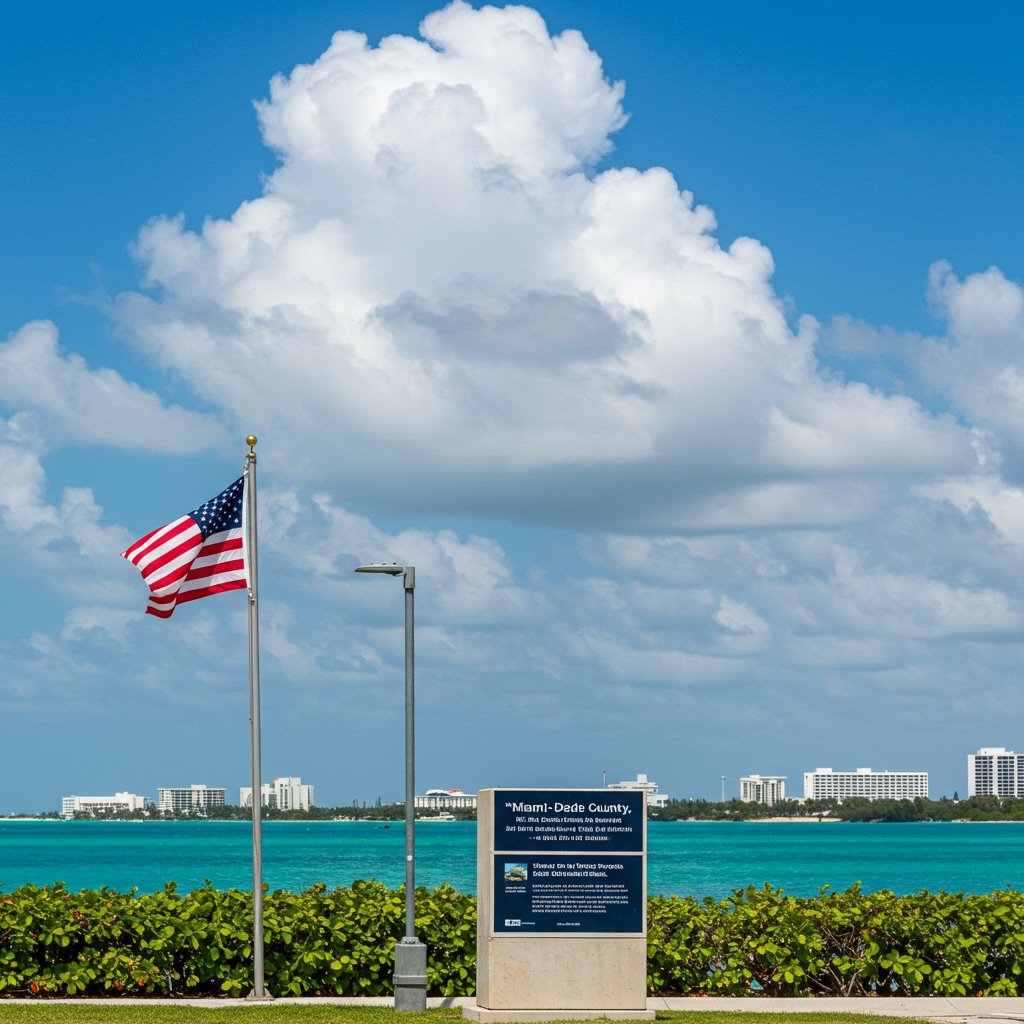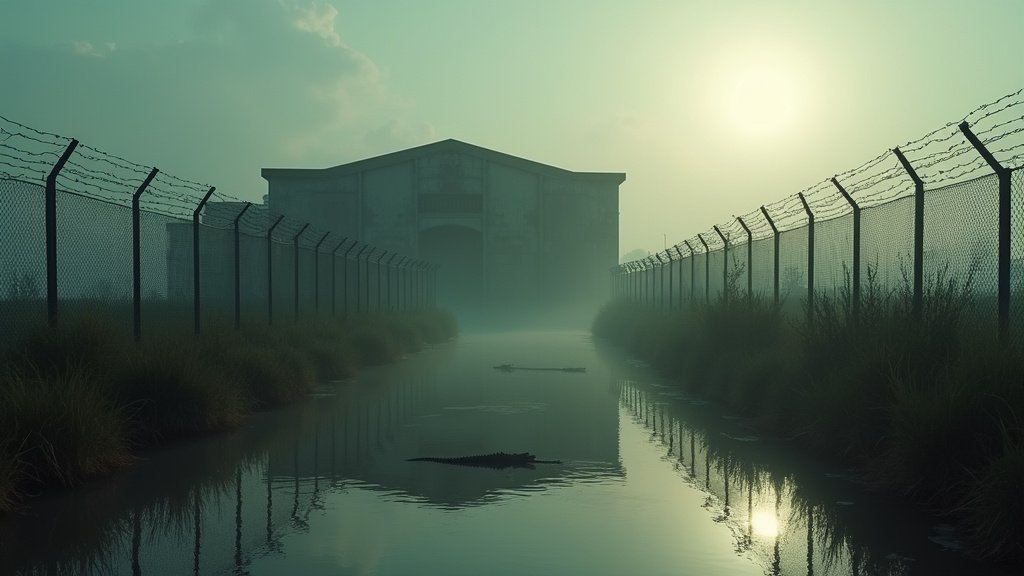Miami-Dade County Lands Crucial $100 Million State Funding for Coastal Defense Projects

Miami-Dade County, FL – In a significant boost to its ongoing efforts to protect its vulnerable coastline against the escalating impacts of climate change and sea-level rise, Miami-Dade County officials announced today, June 7, 2025, that the county has successfully secured a substantial $100 million in state funding. This critical financial allocation, finalized after extensive and detailed negotiations with the Florida Department of Environmental Protection (FDEP), is specifically earmarked to accelerate key coastal resilience initiatives throughout the county.
The substantial sum represents a major investment by the state of Florida in the future and sustainability of one of its most economically vital and environmentally threatened regions. The funding is designated for immediate and long-term infrastructure upgrades in some of the county’s most susceptible coastal communities. Areas explicitly targeted for receiving these vital infrastructure improvements include the globally recognized urban island of Miami Beach, the southern coastal town of Cutler Bay, and the town of Surfside, each facing unique but interconnected challenges related to tidal flooding, storm surge, and persistent sea-level rise.
The projects slated for funding encompass a range of proven and innovative strategies designed to enhance the county’s defensive posture against coastal threats. These include the crucial task of reinforcing existing seawalls and constructing new ones where necessary, a fundamental step in preventing inundation during high tides and storm events. Additionally, a significant portion of the funding will support the expansion and modernization of stormwater pump systems. These systems are vital for rapidly removing floodwaters from streets and properties, a challenge exacerbated by the “ sunny day ” flooding increasingly experienced in low-lying areas.
Furthermore, the allocation will facilitate the implementation of natural infrastructure solutions. This approach involves utilizing and enhancing natural ecosystems, such as restoring mangrove forests, preserving and building up sand dunes, and potentially investing in coral reef health initiatives, all of which provide natural buffers against wave energy and storm surge, while also offering ecological benefits. Combining traditional “hard” infrastructure like seawalls and pumps with “ soft ” natural solutions is a cornerstone of modern, holistic coastal resilience planning.
Significance of the Investment in a Vulnerable Region
Miami-Dade County sits at the forefront of the climate crisis in the United States. Its low elevation, porous limestone geology, and extensive coastline make it particularly susceptible to the impacts of rising sea levels. Scientific projections indicate that south Florida is likely to experience significant sea-level rise in the coming decades, threatening billions of dollars in property value, critical infrastructure, and the safety of millions of residents. The $100 million from the state is therefore not merely an allocation of funds; it is a critical investment in safeguarding the region’s future.
This level of state support underscores the growing recognition at all levels of government regarding the urgent need to address climate change impacts proactively. Securing such a substantial figure required extensive technical consultation and negotiation between Miami-Dade County officials, including resilience experts and budget analysts, and counterparts at the Florida Department of Environmental Protection, the state’s lead environmental agency. The successful outcome reflects a shared commitment to protecting Florida’s coastal communities.
Targeting Key Communities: Miami Beach, Cutler Bay, and Surfside
The selection of Miami Beach, Cutler Bay, and Surfside highlights distinct yet interconnected vulnerabilities within the county. Miami Beach, a major economic engine fueled by tourism and real estate, faces significant challenges from rising groundwater levels and tidal flooding that impacts infrastructure and daily life. Investments there will likely focus on elevated roads, updated stormwater systems, and reinforced coastal defenses.
Cutler Bay, located along Biscayne Bay in the southern part of the county, is susceptible to storm surge from hurricanes and tropical storms, as well as nuisance flooding from high tides. Projects in this area may involve improving drainage, elevating critical infrastructure, and utilizing natural shoreline restoration techniques to absorb wave energy.
Surfside, a residential coastal community north of Miami Beach, also faces threats from coastal erosion and flooding. Resilience efforts here could include beach nourishment, dune restoration, and improvements to local stormwater management.
Each community will see tailored projects based on specific needs and vulnerabilities, but the overarching goal remains the same: to enhance physical resilience, protect property, and ensure public safety in the face of a changing climate.
Miami-Dade’s Long-Term Resilience Strategy
Miami-Dade County Mayor Daniella Levine Cava has been a vocal advocate for aggressive climate action and resilience planning. Mayor Levine Cava highlighted the state funding as a absolutely crucial step in the county’s comprehensive, long-term strategy to protect its extensive coastline and its nearly 2.7 million residents against the multifaceted challenges posed by climate change. “ Securing this $100 million in state funding is a monumental achievement for Miami-Dade County and a testament to our unwavering commitment to building a more resilient future, ” Mayor Levine Cava stated in the announcement. “ This investment will significantly accelerate our efforts to implement vital infrastructure projects that will protect our neighborhoods, our economy, and our quality of life from the impacts of rising seas and more frequent flooding. It represents a critical partnership with the state to address this existential threat head-on.”
The county has already invested considerable local resources and pursued federal funding for resilience projects. This state allocation adds a powerful third pillar of support, enabling a faster pace of implementation for projects that were previously planned but awaiting dedicated funding streams. The county’s resilience strategy involves not only physical infrastructure but also updated building codes, public education, and community-based adaptation plans.
The Urgency and Future Steps
The need for these investments is becoming more apparent with each passing year. High-tide events that once occurred only a few times a year are now more frequent, impacting transportation and infrastructure. Stronger storms, potentially fueled by warmer waters, pose an increasing threat of devastating storm surge.
The secured state funding will now move into the project planning and execution phase. County officials will work closely with the targeted municipalities – Miami Beach, Cutler Bay, and Surfside – to finalize project designs, secure necessary permits, and begin construction. This process will involve technical assessments, environmental reviews, and likely opportunities for public input to ensure projects meet community needs effectively.
While $100 million is a significant sum, county leaders emphasize that this is one step in a long and expensive process of adapting the region to the realities of climate change. Continued investment from local, state, and federal sources, alongside innovative engineering and nature-based solutions, will be necessary to ensure Miami-Dade remains a safe and thriving community for generations to come. The funding announced today on June 7, 2025, marks a critical turning point, transforming plans into tangible action on the ground.





